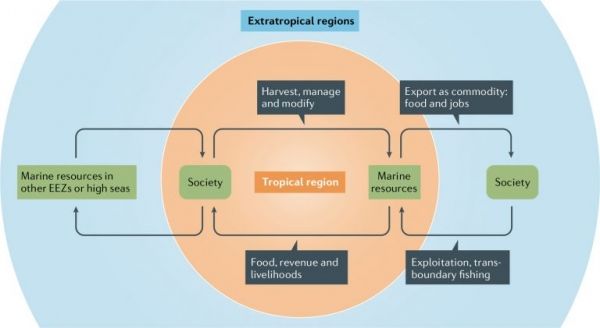Tropical oceans and fisheries are threatened by climate change, generating impacts that will affect the sustainable development of both local economies and communities, and regions outside the tropics through ‘telecoupling’ of human-natural systems, such as seafood trade and distant-water fishing, says a scientific review from UBC and international researchers.
Seafood is the most highly traded food commodity globally, with tropical zone marine fisheries contributing more than 50 per cent of the global fish catch, an average of $USD 96 billion annually. Available scientific evidence consistently shows that tropical marine habitats, fish stocks and fisheries are most vulnerable to oceanic changes associated with climate change. However, the scientific review highlights that telecoupling, or linkages between distant human-natural systems, could generate cascades of climate change impacts from the tropics that propagate to other ‘extra-‘ tropical natural systems and human communities globally.
“Telecoupling interactions between two or more linked areas over distance between tropical fisheries and elsewhere include distant-water fishing, the international seafood supply chain, transboundary fisheries resources and their governance would allow benefits derived from tropical fisheries to transfer to the people in the extratropical regions,” said Vicky Lam, lead author and research associate in the UBC’s Institute for the Oceans and Fisheries. “Although these linkages could enable the flow of benefits, including food, livelihoods and government revenue, from tropical fisheries to extratropical locations, their dependence on tropical fisheries also exposes them to the negative consequences of climate change in tropical regions. The effects of climate change on tropical fisheries also affect the profitability and employment opportunities of fish-processing industries in extratropical regions.”
Read more at University Of British Columbia
Image: Telecoupling linkages between tropical marine fisheries and extratropical regions. CREDIT: Lam et al, Nature Reviews Earth & Environment


